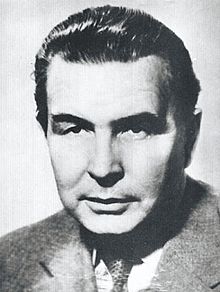Adam Rapacki facts for kids
Quick facts for kids
Adam Rapacki
|
|
|---|---|
 |
|
| 25th Minister of Foreign Affairs | |
| In office 27 April 1956 – 22 December 1968 |
|
| Preceded by | Stanisław Skrzeszewski |
| Succeeded by | Stefan Jędrychowski |
| 1st Minister of Higher Education | |
| In office 15 May 1950 – 27 April 1956 |
|
| Succeeded by | Stefan Żółkiewski |
| 2nd Minister of Shipping | |
| In office 16 April 1947 – 15 May 1950 |
|
| Preceded by | Stefan Jędrychowski |
| Succeeded by | Mieczysław Popiel |
| Personal details | |
| Born | 24 December 1909 Lviv, Austria-Hungary |
| Died | 10 October 1970 (aged 60) Warsaw, Polish People's Republic |
Adam Rapacki (born December 24, 1909 – died October 10, 1970) was an important Polish politician and diplomat. He worked for Poland from 1947 to 1968. He started in a socialist group and later joined the main Communist party in Poland. This party, called the Polish United Workers' Party (PZPR), was very close to the Soviet Union.
Rapacki is most famous for suggesting a plan in 1957. This plan aimed to create a nuclear-free zone in Europe. It meant that certain countries would agree not to have nuclear weapons. Even though his plan was never put into action, it showed his efforts for peace. He was also known for keeping good relations with East Germany.
Contents
Biography
Early Life and Education
Adam Rapacki was born in Lviv (then called Lemberg) on December 24, 1909. At that time, Lviv was part of Austria-Hungary. When World War I started, his family moved to Piotrków Trybunalski. In 1919, they moved to Warsaw.
Adam went to high school in Warsaw from 1920 to 1929. After that, he studied at the SGH Warsaw School of Economics from 1929 to 1931. In 1931, he joined a socialist student group. It was called the Union of Independent Socialist Youth.
World War II and Early Politics
After finishing university in 1932, Rapacki joined the army. He also became a member of his socialist group's council. He often took part in protests and stood up against extreme nationalist groups.
On August 24, 1939, he was called back to the army. He fought against Germany during the invasion of Poland. He was a second lieutenant. On September 22, he was captured near the Modlin Fortress. He spent the rest of World War II in prisoner-of-war camps. While imprisoned, he wrote anti-Nazi books and secret newspapers. He also joined leftist groups and learned Russian. He was freed in April 1945 and returned to Poland in July.
In August 1945, he joined the Polish Socialist Party. He moved to Warsaw in January 1946. He helped prepare for the 1947 elections. During the 1947 Polish legislative election, he was elected as a representative.
Becoming a Minister
On April 16, 1947, Adam Rapacki became the Minister of Shipping. In this role, he worked hard to rebuild and expand Poland's trading ships. From 1950 to 1956, he served as the Minister of Higher Education.
In 1948, he became an important member of the Politburo of the Polish United Workers' Party. This was the main decision-making group of the Communist party in Poland.
From 1956 to 1968, Rapacki was Poland's Foreign Minister. He worked closely with Przemysław Ogrodziński, a key advisor. Rapacki was seen as a leader who wanted more freedom and less strict rules in Poland. This made him quite popular.
The Rapacki Plan
In the 1950s, the main concern for Poland was West Germany. West Germany did not accept the border between Germany and Poland. They also wanted to have nuclear weapons. This worried Poland greatly.
On October 2, 1957, Adam Rapacki presented his famous plan at the United Nations. It was called the "Rapacki Plan". He suggested creating a nuclear-free zone in Central Europe. This zone would include Czechoslovakia, Poland, East Germany, and West Germany. The idea was to prevent nuclear weapons from being placed in these countries.
However, Western countries did not accept the plan. They were worried about the large number of regular (non-nuclear) forces in the East.
Adam Rapacki died in Warsaw on October 10, 1970, at the age of 60.
Awards and Honors
Rapacki received many awards for his work. These included the Order of the Builders of People's Poland and the Order of the Banner of Work. He also received awards from other countries, like the Order of the Southern Cross and the Order of Merit of the Italian Republic. In 1967, he was given the Order of the People's Republic of Bulgaria.
See also
 In Spanish: Adam Rapacki para niños
In Spanish: Adam Rapacki para niños
- List of Poles

